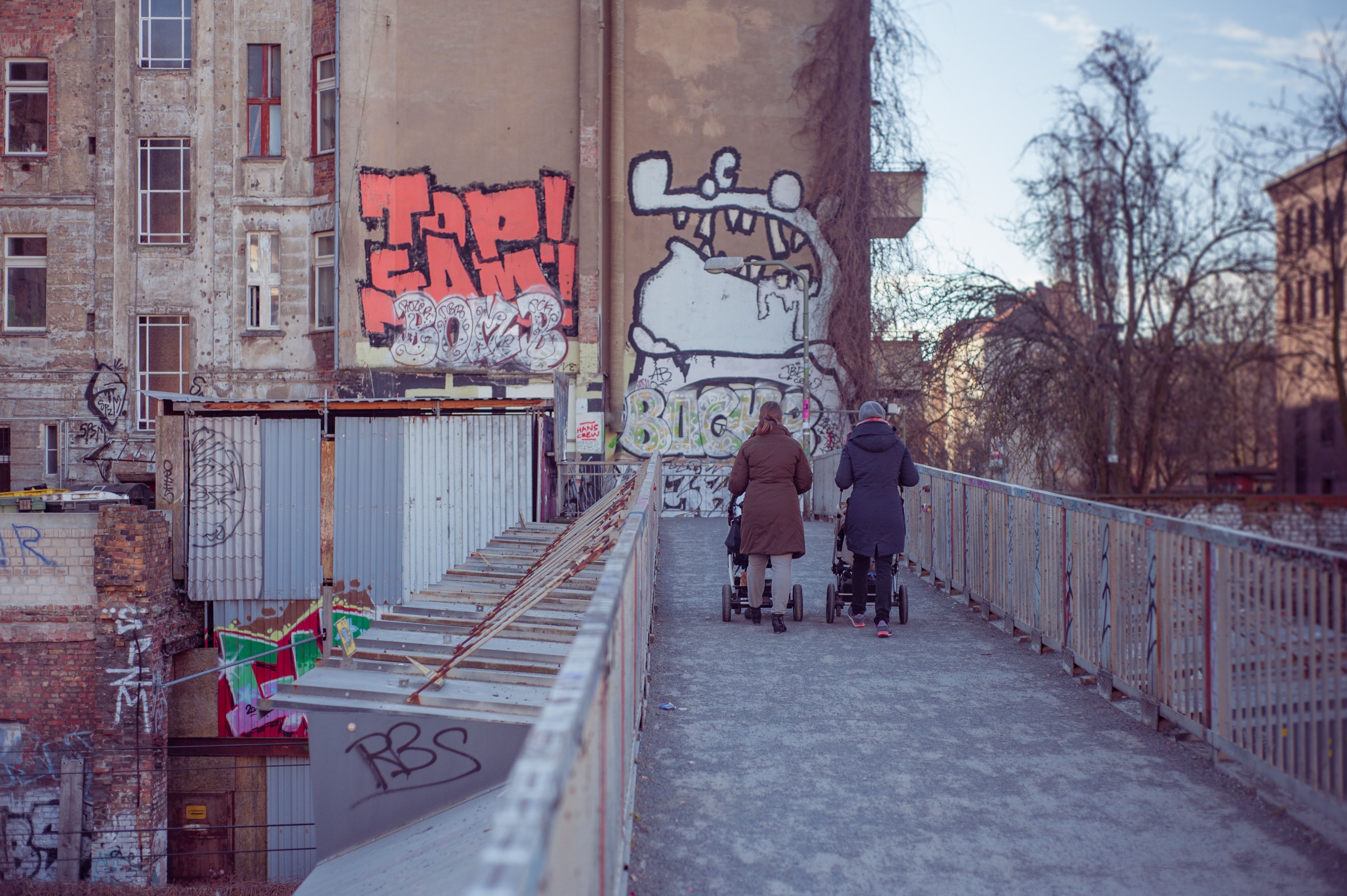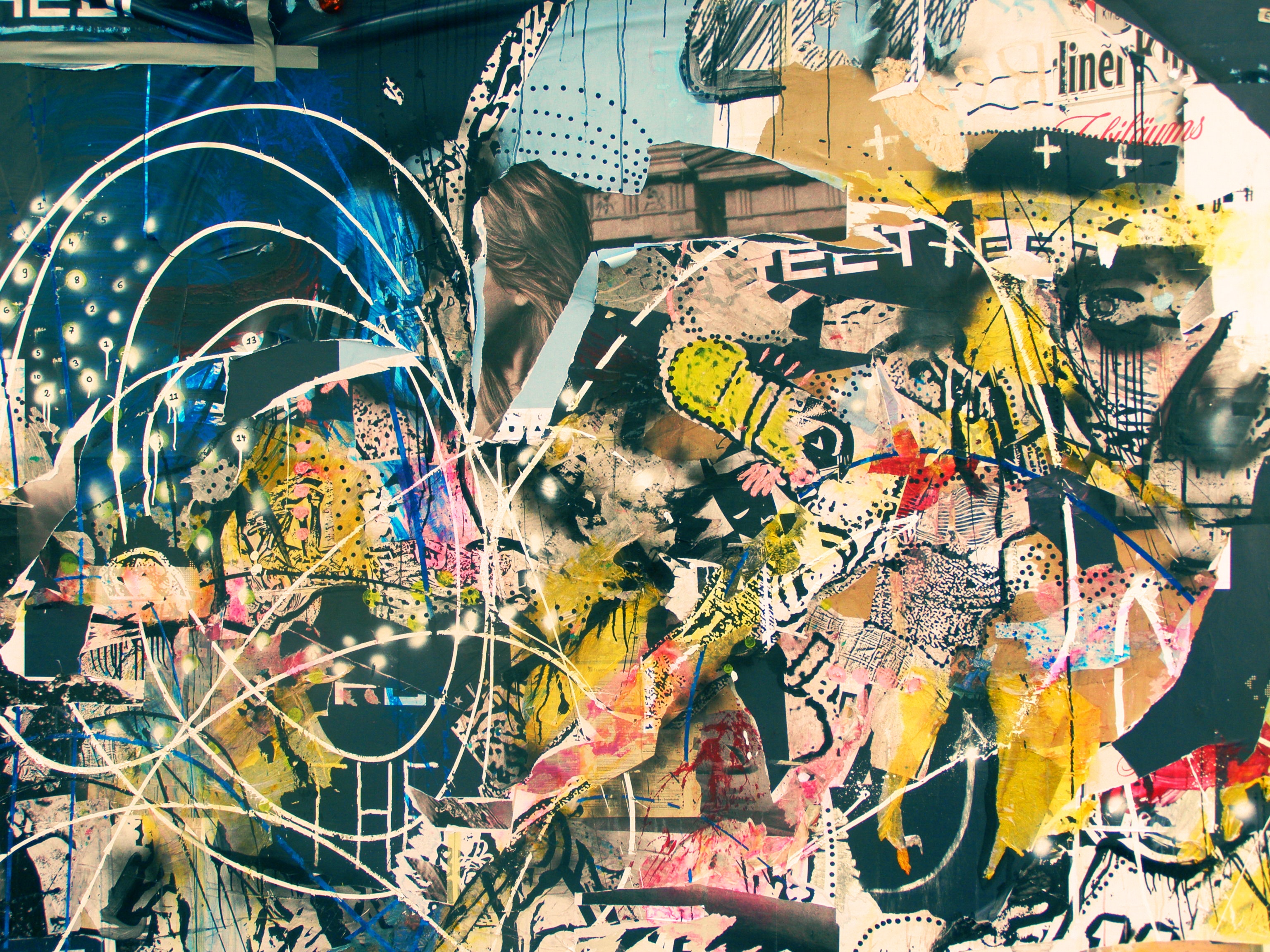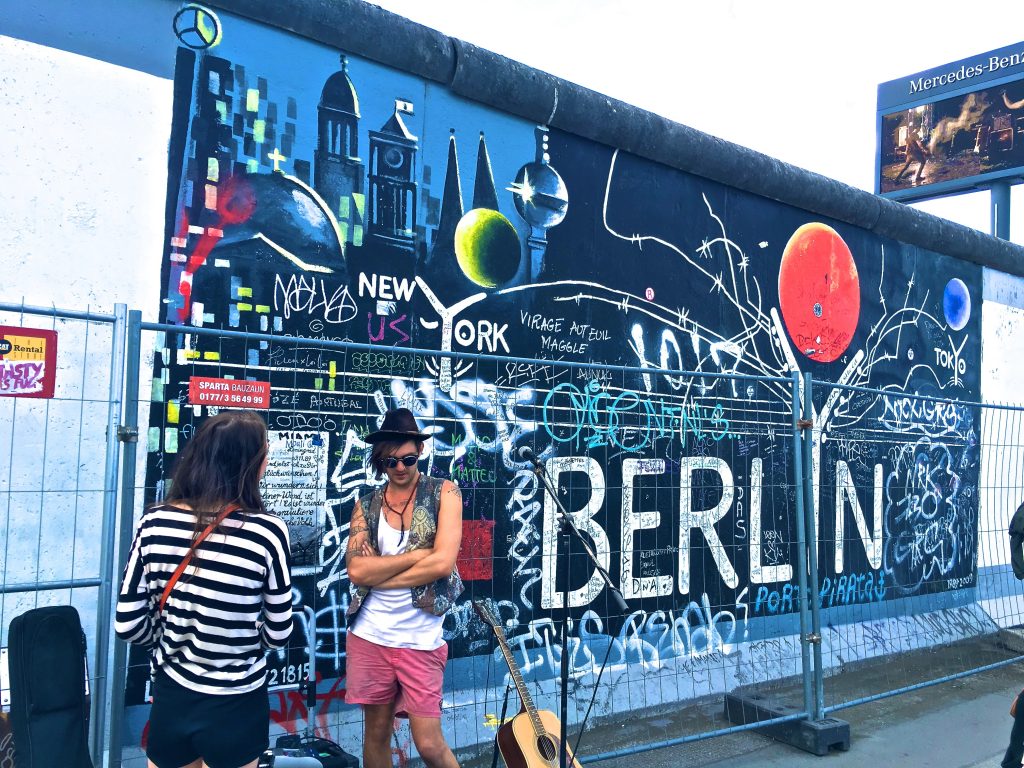The story of Friedrichshain, one of the most popular Berlin neighbourhoods, is the story of the rebellion and the system, squats and gentrification, old Berlin, and new Berlin. It is a story of change.
If you are a tourist, you probably don’t know much about Friedrichshain. But we bet you do know Berghain, RAW, Wilder Renate, Kater Blau and About Blank. All the most famous clubs inhabit its abandoned industrial areas, warehouses, and factories – fully embracing the dystopian image that became so recognizable for Berlin in the last 30 years.
But the streets around Boxhagener Platz tell a different story. Young german families and ex-pats walking into designer shops and hip fusion restaurants like they do in any other western city.
Not far, next to Warschauer Brücke, yet another mall has appeared. It sparked a lot of dissatisfaction. Its sole purpose – according to singer-songwriter Alice Phoebe Lou- is to block one of the most beautiful sunsets this city can offer. And many agree with her.
The neighbourhood is changing, but it already went through a lot of changes in the last hundred years.

The story of Friedrichshain the ideal communist city
All the turmoils of the 20th century left their mark on the neighbourhood. The name came from Volkspark Friedrichshain, the first public park located on its western border. A former vineyard opened its doors to the public in 1848 when the emperor Frederick the Great ascended to the throne.
In 1920 the Greater Berlin Act came into power. Berlin, as we know it today, started to take shape. Friedrischain became an official borough. At that time, an industrial area built around the railway between Ostbahnhof to Frankfurt am Oder. Most of the inhabitants were workers employed by the Knorr-Bremse brake factory.
During the Second World War, the industry was heavily targeted by the Allies. Friedrichshain became one of the most damaged parts of Berlin. After the war, the area became part of the newly formed East Berlin. Only the river Spree divided it from Kreuzberg and the West.
Given the level of the damage, the Soviets saw it as an empty canvas where they could raise their ideal communist city. They built vast avenues similar to those in Moscow with towering apartment buildings on each side. The majestic—for some soulless—Stalin Allee, conceived initially for parades and cheering crowds, are now known as Karl Marx Allee (between Alexanderplatz and Frankfurter Tor) and Frankfurter Allee (beyond Frankfurter Tor). These two avenues dominate the neighbourhood.

The story of squats and gentrification in Friedrichshain
In the ’70s, squats became an essential part of the Berlin culture, and the streets of Friedrichshain were full of them. However, today one word is on everyone’s lips: gentrification.
Old butcher shops and workshops became hip restaurants and designer shops, but every hundred meters, you are bound to encounter a building ornamented with beautiful banners and graffiti. The messages are protesting against capitalism and the increasing rent, and rooting for anarchy. Many mention “Free Liebig 34!”, which refers to the last standing squat in the area and has become a symbol of resistance and brings us to another word: punk!
Shortly after the fall of the wall, the city started to “clean” and evict most of the inhabitants in the occupied buildings on Rigaer Straße and Mainzer Straße. They tore down some of them while others reached an agreement with the city and now pay a symbolic rent. Gentrification officially began, and Rigaer Straße was literally burning: the protestors were setting cars on fire, and clashes with the police were common.
This spirit—weakened but very much alive—is still present 30 years later. In punk bars which sell beer for one euro; in places like Liebig 34 or Rigaer 94 that are always under police surveillance; in protests against new construction and rising rents; or Voküs: community kitchens organized by occupiers where anyone can enjoy a vegetarian dish for a few euros.
Friedrichshain has a dynamic history and two very different sides. And both of them like to dance. If you want to know more about the cools bar in Friedrichshain, please read our article about hipster and punk bars in the hood.

